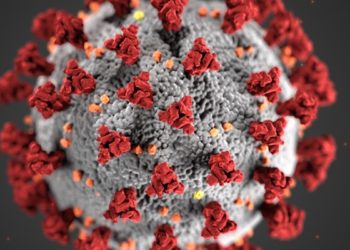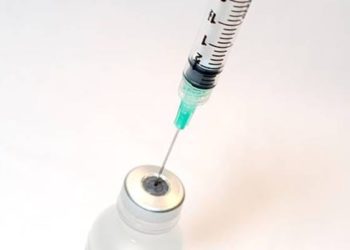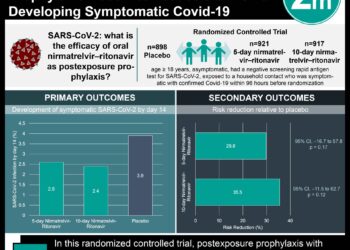Timing of and adherence to social distancing measures likely affect COVID-19 transmission
1. This agent-based modeling study found that a 1-week delay in implementation of social distancing requirements could have increased confirmed cases over 5-fold in urban communities such as NYC.
2. Likewise, a small decrease in adherence to guidelines resulted in a doubling of projected cases, demonstrating the importance of personal behaviors.
Evidence Rating Level: 3 (Average)
Study Rundown: In the absence of any concrete information regarding the durability of protective immunity against SARS-CoV-2, slowing transmission of the virus is essential in limiting COVID-19-related morbidity and mortality. Social distancing appears to be the most effective strategy to slow the transmission of the virus at present, but this approach is associated with significant negative consequences on the economy, education, and even health outcomes for other diseases. Given these ramifications, accurate predictions regarding the effects of easing restrictions are necessary to determine the appropriate timing for adjustment of precautionary measures. In this study, an agent-based model that incorporated local demographic characteristics, population density, the daily number of contacts, general adherence, and testing capacity was used to analyze transmission dynamics in 3 distinct urban areas. After calibrating and validating the input parameters against real data, it was discovered that both the timing of social distancing and compliance with those guidelines had significant effects on the cumulative case count, although the magnitude varied according to the unique characteristics of each region. Both delayed implementation and premature lifting of restrictions were severely detrimental, and even minor reductions in adherence had major effects. While this agent-based technique was able to overcome several inadequacies of the previously published, more rigid models, it was still limited by a heavy reliance on simplifying assumptions (i.e. constant transmission rate regardless of symptoms and weather). Nonetheless, these results confirmed the effectiveness of social distancing in curbing viral spread and suggested that policy decisions should be tailored at the local level.
Click here to read the study in Annals of Internal Medicine
Click here to read an accompanying editorial in Annals of Internal Medicine
In-Depth [modeling study]: This study utilized an agent-based simulation in which individuals with unique attributes were categorized into 1 of 8 COVID statuses (susceptible, exposed-incubation, unknown infected, mild, known infected, mild, infected with severe symptoms, infected with critical symptoms, recovered, and deceased) and allowed to interact with each other on a day-by-day basis. The two parameters affecting transmissibility that were considered were number of close contacts per day (dependent on population density and age) and likelihood of infection upon close contact, yielding a theoretical basic reproductive number (Ro) of 3.34. Percent adherence, serving as a proxy for personal behaviors including travel, 6-foot spacing, handwashing, and mask usage, was also an important factor in analysis. After accounting for imported infections, this model was applied to three urban communities of varying size: Dane County, Milwaukee, and New York City. Early implementation of social distancing measures and high adherence were both highly effective in reducing the number of cases across all three regions. For instance, the total number of cases in NYC could have been reduced by ~80% (203,261 to 41,366) by 31 May had mandates taken effect 1 week earlier; on the other hand, a 1-week delay could have increased the case count to over 1.4 million in the same time. This effect was significantly less pronounced in the smaller, less dense Dane County (36% increase with a 1-week delay versus 539% in NYC). Easing of these measures also made a heavy contribution to transmission rate, with a 15% decrease in adherence on 8 June projected to result in a near doubling of cases in NYC by 31 July (224,194 to 439,728). Notably, the date of easing was less impactful than the magnitude of the drop in adherence upon easing.
Image: PD
©2020 2 Minute Medicine, Inc. All rights reserved. No works may be reproduced without expressed written consent from 2 Minute Medicine, Inc. Inquire about licensing here. No article should be construed as medical advice and is not intended as such by the authors or by 2 Minute Medicine, Inc.







